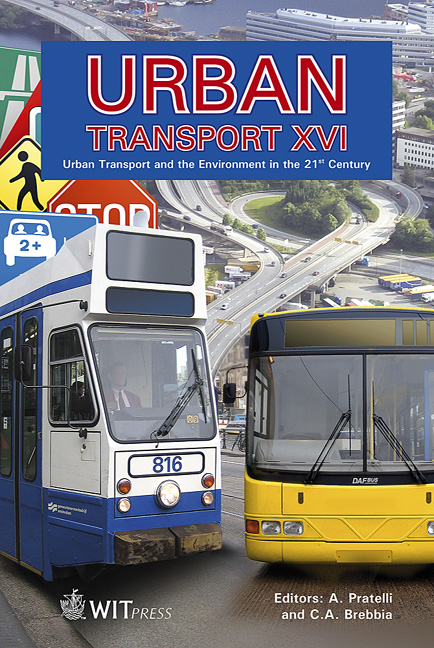Costs And Externalities Of Road Transport In Portugal
Price
Free (open access)
Transaction
Volume
111
Pages
12
Page Range
23 - 34
Published
2010
Size
302 kb
Paper DOI
10.2495/UT100031
Copyright
WIT Press
Author(s)
M. Lopes, P. Gomes, H. Martins & C. Borrego
Abstract
Urban dispersion (sprawl) is a reality, however unplanned it may be. Its supporters advocate contact with nature, space and intimacy, however disadvantages include land consumption, public infrastructure and mobility costs and housing prices. The Research Project \“Costs and Benefits of Urban Dispersion on a local scale” seeks to contribute to the debate with an objective approach based on the quantification of costs, externalities and benefits of different urban settlement patterns. This paper presents one of the Project’s tasks, the one concerning mobility costs, including externalities. Quantified costs include investment, inspection, insurance, energy and maintenance, as well as external social and environmental costs for road transport, the most significant transport mode operating on a local scale. Different methods are combined depending on available data sources in order to achieve figures for each of the cost components per vehicle-km, ton-km and passenger-km at prices of 2005. Preliminary results for direct costs suggest that in light vehicles investment costs are responsible for the largest share of the totals, while energy costs are the most relevant cost component in heavy vehicles. Heavy duty passenger transport is significantly more expensive than their counterparts. Externalities may mount up to around half of the total costs for some road vehicles. Keywords: urban dispersion; road transport; internal costs; externalities. 1 Introduction The urban future of Europe is today a matter of great concern, since approximately 75% of the European population lives in urban areas, a number
Keywords
urban dispersion; road transport; internal costs; externalities





